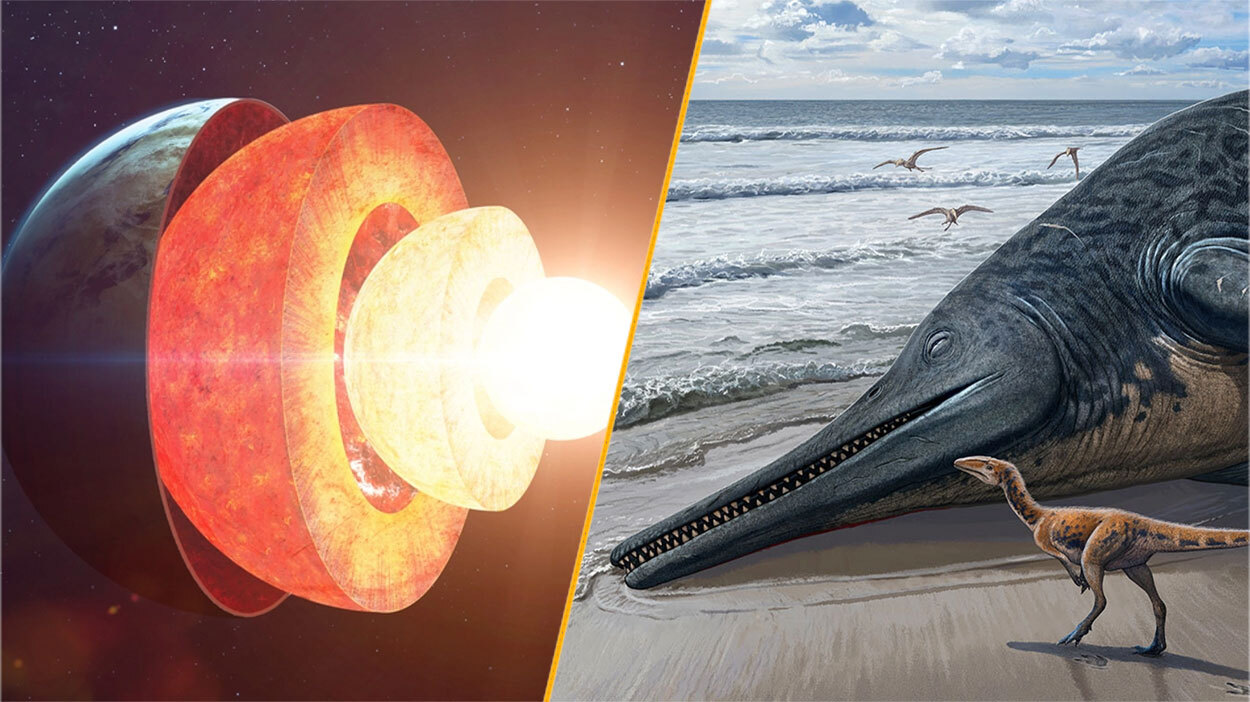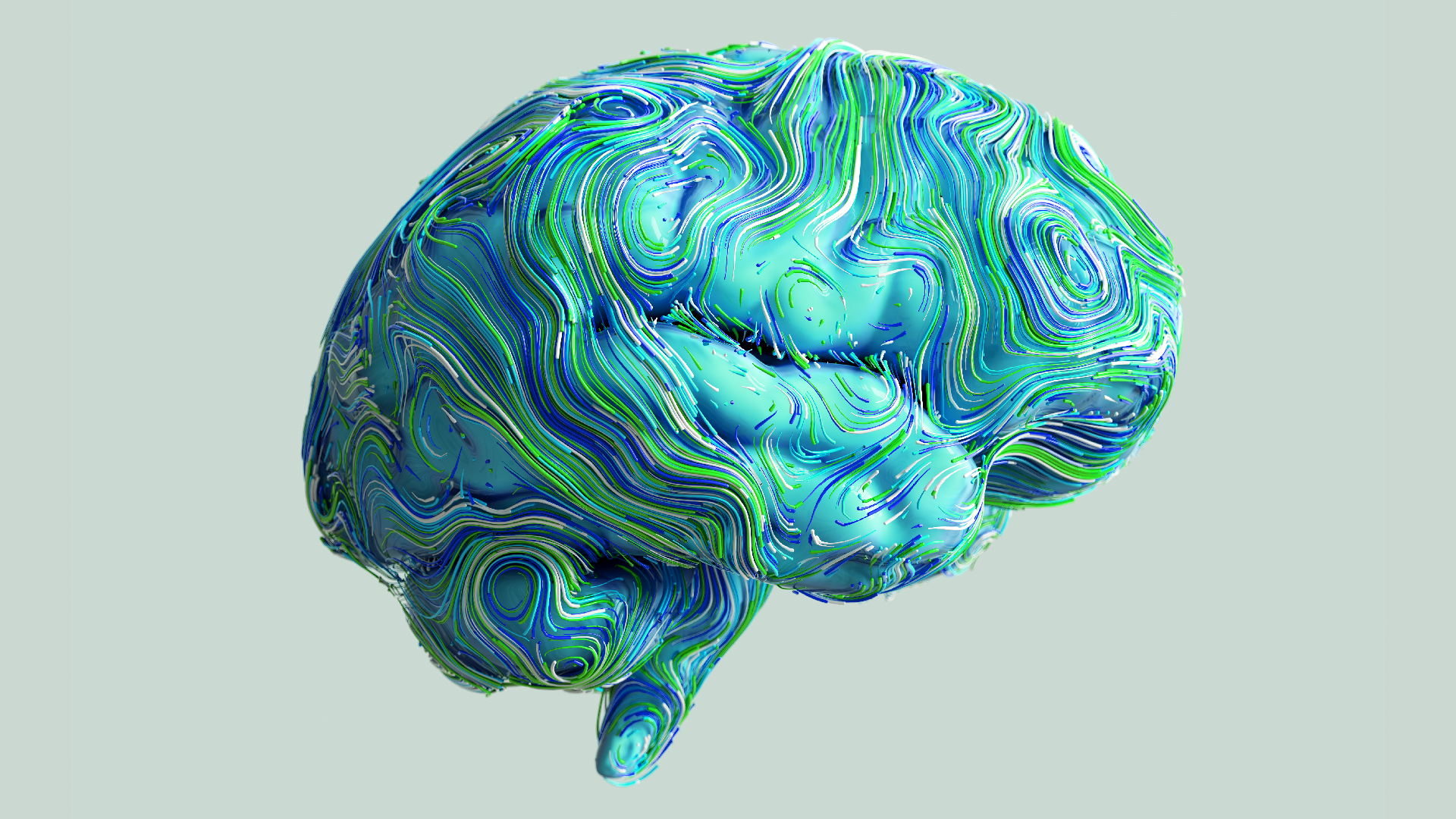'Spiders on Mars' and ancient sea monsters: 5 of the biggest science stories you read in 2024
It's been a big year for science news.

From orcas wearing salmon hats to April's total solar eclipse, it's been a big year for science news. We've brought together the five stories that you loved the most in 2024, starting with a cosmic conundrum that could rewrite everything we thought we knew about the universe.
We've been wrong about the universe

At the start of the year, the James Webb and Hubble space telescopes teamed up to confirm one of the most troubling conundrums in physics — that the universe is expanding at different speeds depending on where we look.
The phenomenon was first observed by Hubble in 2019 and again by James Webb in 2023, but scientists hoped there might have been an error in the measurements. But on Feb. 6, a triple-check confirmed these discrepancies, throwing what we thought we knew about the universe into question.
"With measurement errors negated, what remains is the real and exciting possibility we have misunderstood the universe," lead study author Adam Riess, professor of physics and astronomy at Johns Hopkins University, said in a statement.
Discover more James Webb highlights from 2024
—James Webb telescope sees 'birth' of 3 of the universe's earliest galaxies in world-1st observations
Spiders on Mars

More extraterrestrial excitement was stirred towards the end of April, when the European Space Agency (ESA) photographed hordes of spindly, spider-like markings littered across Mars' south polar region, around a mysterious formation known as Inca City.
The black clusters appeared to have tiny, spoke-like legs, reminiscent of a huddle of baby spiderlings. However, ESA revealed that the ”alien arachnids” were actually a seasonal geological feature born from layers of melting carbon dioxide ice.
Indeed, a few months later, researchers were actually able to recreate these strange spider-like structures on our own planet.
Discover more space highlights
Giant 200-million-year-old 'sea monster' found on beach

Also in April, scientists unearthed the remains of what they believe to be the largest marine reptile ever discovered, on a beach in Somerset in the U.K.
Piecing together the remaining bone fragments from the 200-million-year-old Triassic predator, the team estimated that the living animal would have been about 82 feet (25 meters) long. This smashes the previous record for the largest marine reptile — Shonisaurus sikanniensis, which would have measured around 69 ft (21 m).
The researchers named the newly discovered fossil Icthyotitan severnensis, which means giant lizard fish of the Severn, after the Severn Estuary where it was found.
Discover more animal highlights
—Orcas start wearing dead salmon hats again after ditching the trend for 37 years
—Ants perform life saving operations — the only animal other than humans known to do so
Earth's inner core is slowing down

Since 2014, scientists have noticed a mysterious trend deep inside our planet — Earth's solid inner core is spinning unusually slowly.
The moon-size chunk of solid iron and nickel at the center of our planet is surrounded by an outer layer of swirling liquid iron, and it is this outer core — combined with gravitational forces from the overlying mantle — that appears to be slowing down the inner core's rotation.
But what does this mean for us? So far, we can only speculate, but researchers say it could potentially lengthen days on Earth — albeit only by a couple of milliseconds.
Discover more planet earth highlights
—Never-before-seen shapes up to 1,300 feet long discovered beneath Antarctic ice
—'Superstructure' bigger than Idaho has been growing on the seafloor by Fiji since the dinosaur age
700-year-old child sacrifice

In early November, archaeologists uncovered a 700-year-old burial mound in Peru containing the remains of 76 sacrificed children and two adults. Each had had their chest cut open, likely to gain access to their hearts.
The bodies were accompanied by silver, gold, ornaments and the shells of a tropical marine mollusk called a Spondylus — objects that the researchers say were "more valuable than gold" for the local community at the time.
The shells also hint that the sacrifice victims may have come from a conquered northern territory and been brought to the site of the burial to work on the land. The researchers say the children may have been sacrificed in an effort to "energize" the agricultural fields.
Discover more archaeology highlights
—Pompeii victims aren't who we thought they were, DNA analysis reveals
Sign up for the Live Science daily newsletter now
Get the world’s most fascinating discoveries delivered straight to your inbox.

Pandora is the trending news editor at Live Science. She is also a science presenter and previously worked as Senior Science and Health Reporter at Newsweek. Pandora holds a Biological Sciences degree from the University of Oxford, where she specialised in biochemistry and molecular biology.










